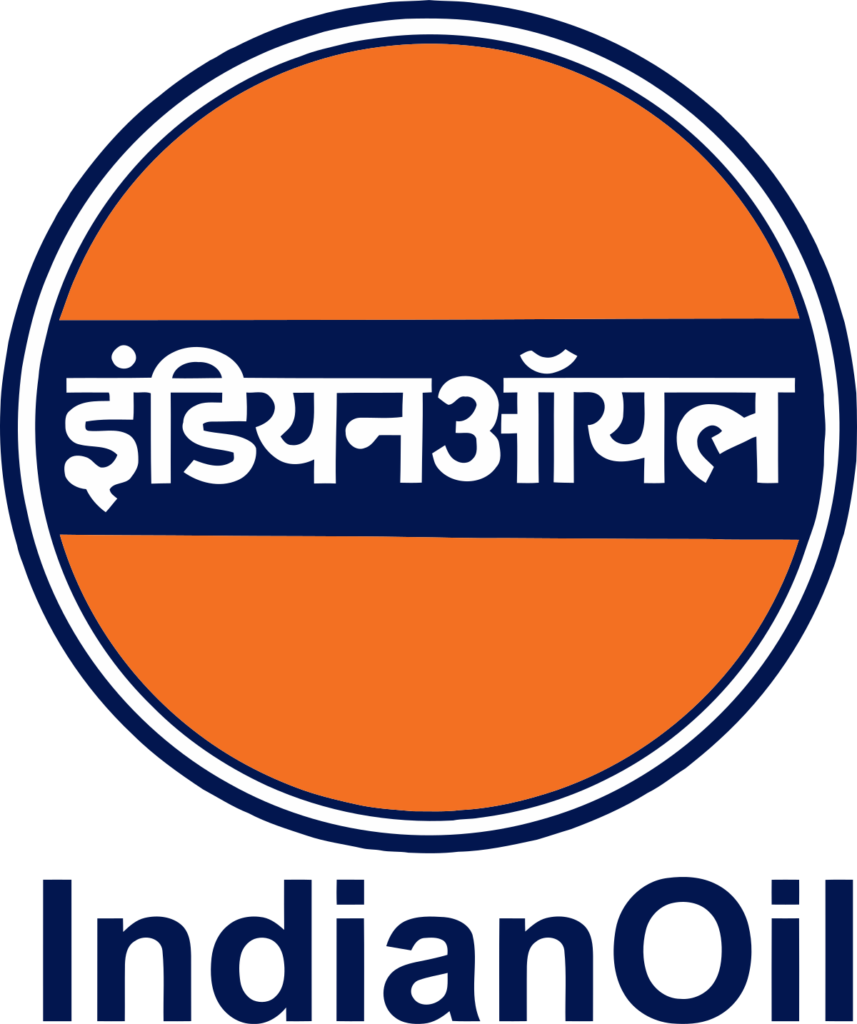In this article, we explore the Indian Oil Business Model to explain and understand how the Business Model of Indian Oil is structured and to learn about how Indian Oil makes money.
Indian Oil Corporation Limited (IOCL), also known as IndianOil, is the largest commercial enterprise in India, holding a significant position in the global oil and gas industry. As a Fortune 500 company, IndianOil is ranked 151st on the list and holds an impressive 33rd position in the Platts Top 250 Global Energy Company Rankings. The company is a state-owned enterprise, serving as a flagship of the Indian government’s public sector undertakings (PSUs).
In this blog post, we delve into the business model of Indian Oil, using the Business Model Canvas developed by Alexander Osterwalder. This canvas is a visual tool that helps to map out and understand the various aspects of a business model, making it easier for entrepreneurs and managers to analyze and develop their strategies.
Before we dive into IndianOil’s business model, let’s take a brief look at the company’s history and its founders.
IndianOil: History and Founders
Indian Oil was established in 1959 by the government of India as a result of the Industrial Policy Resolution (IPR), which aimed to promote the growth of heavy industries in the country. The IPR was instrumental in creating several other public sector undertakings in various sectors, including steel, chemicals, and engineering.
The company was formed by merging the Indian Oil Company, established in 1958, with the Indian Refineries Limited, founded in 1959. The primary objective behind this merger was to create a single entity responsible for the complete value chain of the oil and gas industry in India, from exploration to distribution.
IndianOil’s first refinery was commissioned at Guwahati in Assam in 1962, and since then, the company has expanded its operations across the country, serving millions of customers through a vast network of pipelines, refineries, and marketing divisions.
Now that we have some background on Indian Oil, let’s break down its business model using Alexander Osterwalder’s Business Model Canvas.
- Customer Segments
IndianOil serves a diverse range of customer segments, including:
- Retail Customers: The company provides fuel, lubricants, and other related products to end-users through its extensive network of over 50,000 retail outlets across the country.
- Industrial and Commercial Clients: IndianOil supplies fuel, lubricants, and other petroleum products to various industries such as power generation, transportation, construction, and manufacturing.
- Aviation Industry: The company is a major supplier of aviation turbine fuel (ATF) to domestic and international airlines operating in India.
- Government and Defense: IndianOil supports the energy requirements of the Indian government, including the Indian Railways and defense forces.
- International Customers: The company exports petroleum products to neighboring countries and participates in international tenders for the supply of crude oil and petroleum products.
- Value Proposition
IndianOil’s value proposition can be summarized in the following key aspects:
- Comprehensive Product Offerings: IndianOil provides a wide range of petroleum products, including petrol, diesel, LPG, kerosene, lubricants, and aviation turbine fuel. This diverse product portfolio enables the company to cater to the varying energy requirements of different customer segments.
- Extensive Infrastructure and Distribution Network: IndianOil operates 11 refineries in India with a combined capacity of over 80 million metric tons per annum (MMTPA). The company has a vast distribution network, including pipelines, terminals, depots, and retail outlets, ensuring efficient and timely delivery of products to customers.
- Quality and Innovation: IndianOil invests heavily in research and development (R&D) to ensure the quality of its products and services, as well as to develop new technologies and solutions for the energy sector. The company operates one of the largest R&D centers in Asia, focusing on areas such as alternative fuels, renewable energy, and environmental conservation.
- Strong Brand and Market Presence: As the largest commercial enterprise in India, IndianOil enjoys a strong brand presence and market leadership in the oil and gas sector. The company’s market share and brand recognition contribute to its ability to attract and retain customers.
- Commitment to Sustainability and Corporate Social Responsibility (CSR): IndianOil is committed to sustainable development and environmental stewardship, implementing various initiatives to reduce its environmental footprint. Additionally, the company actively participates in CSR activities, contributing to the social and economic development of the communities in which it operates.
- Channels
IndianOil’s primary channels for distributing its products and services include:
- Retail Outlets: The company operates an extensive network of over 50,000 retail outlets across India, providing fuel and other products to customers.
- Bulk Sales: IndianOil serves large-volume customers, such as industrial and commercial clients, through bulk sales and long-term supply agreements.
- Aviation Fuel Stations: The company operates aviation fuel stations at airports across the country, supplying aviation turbine fuel to airlines.
- LPG Distributors: IndianOil’s LPG products are distributed through a network of authorized dealers and distributors across India.
- International Trade: The company exports petroleum products to neighboring countries and participates in international tenders for the supply of crude oil and petroleum products.
- Customer Relationships
IndianOil maintains customer relationships through various means, such as:
- Dedicated Customer Support: The company provides customer support through its toll-free helpline, email, and social media channels, addressing customer queries, feedback, and complaints.
- Loyalty Programs: IndianOil operates loyalty programs for its retail and commercial customers, offering rewards and incentives to encourage repeat business.
- Corporate and Institutional Sales Team: The company has a dedicated sales team to cater to the specific needs of its corporate and institutional clients, offering customized solutions and services.
- Community Engagement and CSR Initiatives: IndianOil engages with local communities through CSR activities and programs, fostering goodwill and enhancing its reputation as a responsible corporate citizen.
- Key Activities
IndianOil’s key activities can be broadly classified into the following categories:
- Exploration and Production: The company is involved in the exploration and production of crude oil and natural gas, both domestically and internationally.
- Refining: IndianOil operates 11 refineries in India, processing crude oil into various petroleum products.
- Marketing and Distribution: The company is responsible for the marketing and distribution of its products through its extensive infrastructure and distribution network.
- Research and Development: IndianOil invests in R&D to improve product quality, develop new technologies, and explore alternative energy sources.
- Corporate Social Responsibility: The company actively participates in CSR activities, contributing to the social and economic development of the communities in which it operates.
- Key Resources
IndianOil’s key resources include:
- Physical Assets: The company’s physical assets include refineries, pipelines, terminals, depots, and retail outlets, which enable it to efficiently produce, transport, and distribute its products.
- Human Capital: IndianOil’s skilled workforce, including engineers, scientists, and management professionals, contributes to the company’s success in a highly competitive industry.
- Intellectual Property: The company owns various patents and proprietary technologies resulting from its R&D efforts.
- Brand and Market Presence: IndianOil’s strong brand and market presence help it maintain its leadership position in the Indian oil and gas sector.
- Key Partnerships
IndianOil engages in strategic partnerships with various stakeholders, such as:
- Government and Regulatory Bodies: The company works closely with the Indian government and regulatory authorities to ensure compliance with industry regulations and standards.
- Joint Ventures and Alliances: IndianOil participates in joint ventures and alliances with other oil and gas companies, both domestic and international, to enhance its capabilities in exploration, production, and marketing.
- Technology Partners: The company collaborates with technology providers and research institutions to develop new technologies and solutions for the energy sector.
- Suppliers and Contractors: IndianOil relies on a network of suppliers and contractors for the procurement of raw materials, equipment, and services essential to its operations.
- CSR Partners: The company partners with non-governmental organizations (NGOs) and local communities for the implementation of its CSR initiatives and programs.
- Cost Structure
IndianOil’s cost structure can be broadly categorized into the following components:
- Raw Material and Energy Costs: The company incurs significant costs for the procurement of crude oil, natural gas, and other raw materials, as well as energy consumption in its refining and production processes.
- Operational and Maintenance Costs: IndianOil incurs costs related to the operation and maintenance of its refineries, pipelines, terminals, depots, and retail outlets.
- Employee Expenses: The company’s workforce, including salaries, wages, and benefits, contributes to its overall cost structure.
- Research and Development Expenses: IndianOil’s investments in R&D activities result in costs related to personnel, equipment, and other resources.
- Sales and Marketing Expenses: The company incurs costs for the marketing and distribution of its products, including advertising, promotions, and logistics.
- CSR and Environmental Compliance Costs: IndianOil’s commitment to CSR activities and environmental compliance leads to costs associated with the implementation of various initiatives and programs.
- Revenue Streams
IndianOil’s revenue streams can be broadly classified into the following categories:
- Sale of Petroleum Products: The company generates revenue through the sale of petroleum products, including petrol, diesel, LPG, kerosene, lubricants, and aviation turbine fuel, to various customer segments.
- Export of Petroleum Products: IndianOil earns revenue from the export of petroleum products to neighboring countries and participation in international tenders for the supply of crude oil and petroleum products.
- Sale of Petrochemicals: The company also generates revenue through the sale of petrochemical products, such as polymers, chemicals, and fertilizers, to various industries.
- Ancillary Services: IndianOil offers ancillary services, such as pipeline transportation, storage, and consultancy, providing additional revenue streams.
In conclusion, Indian Oil Corporation Limited has established itself as a dominant player in the Indian oil and gas sector, leveraging its comprehensive product offerings, extensive infrastructure and distribution network, strong brand and market presence, and commitment to sustainability and corporate social responsibility. By using Alexander Osterwalder’s Business Model Canvas, we have been able to decode the various components of IndianOil’s business model, providing valuable insights into the factors that have contributed to the company’s success and resilience in a highly competitive industry.
As the world transitions to cleaner and more sustainable sources of energy, IndianOil will need to continue to innovate and adapt its business model to remain relevant and competitive in the rapidly evolving energy landscape. By understanding and addressing the changing needs of its customers, forging strategic partnerships, and investing in research and development, IndianOil is well-positioned to continue its growth trajectory and maintain its leadership position in the global oil and gas sector.
Did you know? Corporate teams like to use our co working space in Bangalore.
Learn more about our coworking space on our YouTube channel Work Theater Studios where we talk about a variety of topics including personal finance, entrepreneurship, business and life.
Did you know? We also have a private theatre in Bangalore.




